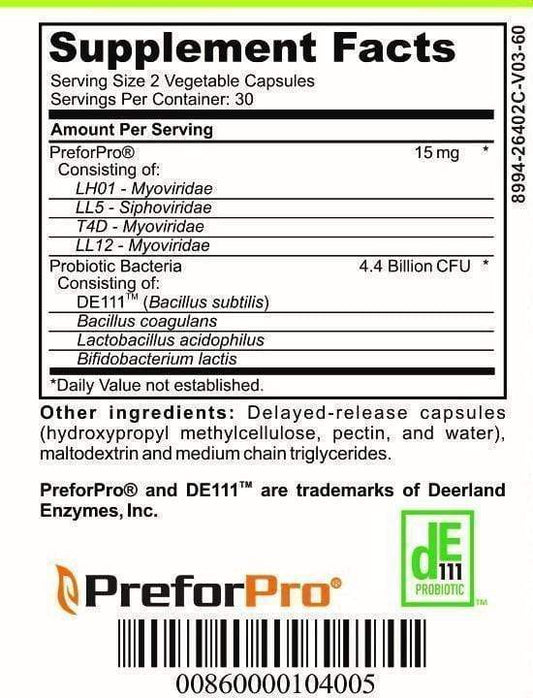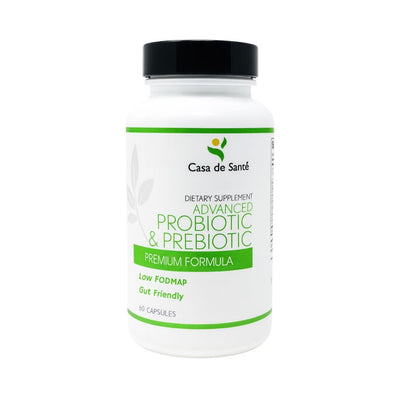The Ultimate Guide to Navigating the Low Histamine Diet: Foods to Include and Avoid
The Ultimate Guide to Navigating the Low Histamine Diet: Foods to Include and Avoid
Living with histamine intolerance can be challenging. This condition occurs when the body is unable to break down and remove excess histamine properly. The result is a range of uncomfortable symptoms, from headaches and rashes to digestive issues and allergies. Managing histamine intolerance often involves following a low histamine diet. In this ultimate guide, we will explore everything you need to know about navigating the low histamine diet, including the foods to include and avoid in your daily meals.
Navigating the Histamine Intolerance Foods List
When it comes to managing histamine intolerance, one of the first steps is to familiarize yourself with the histamine intolerance foods list. This list provides an overview of foods that are high in histamine or known to release histamine in the body. By intentionally avoiding these foods, you can significantly reduce histamine levels and alleviate symptoms.
But what exactly is histamine intolerance? Histamine is a chemical compound that is naturally present in our bodies and plays a crucial role in our immune system. However, some individuals may have difficulty breaking down histamine, leading to an excess buildup in the body. This excess histamine can then trigger a wide range of symptoms, including headaches, nasal congestion, skin rashes, and digestive issues.
Identifying the culprits behind histamine intolerance is essential in managing the condition effectively. Some examples of high histamine foods to avoid include aged cheeses, fermented foods, cured meats, and alcoholic beverages. These foods are known to have high levels of histamine or to trigger its release in the body. It is essential to read food labels carefully and be aware of potential hidden sources of histamine, such as additives and preservatives.
Additionally, some individuals may also be sensitive to other biogenic amines, such as tyramine and phenylethylamine, which can exacerbate histamine intolerance symptoms. Foods like certain fruits, chocolate, and nuts, which contain these amines, should also be monitored and limited in the diet.
Now, you may be wondering, what are the benefits of trying a low histamine diet? By adopting a low histamine diet, individuals with histamine intolerance can experience significant benefits. One of the key advantages is a reduction or elimination of symptoms such as headaches, nasal congestion, skin rashes, and digestive issues. Many individuals also report improvements in energy levels, mood, and overall well-being.
It is important to note that histamine intolerance can manifest differently in each person, and the degree of improvement may vary. However, embracing a low histamine diet is often worth considering, as many people find relief from their symptoms and an improved quality of life.
Aside from avoiding high histamine foods, there are other strategies that can help manage histamine intolerance. Some individuals find it helpful to incorporate natural antihistamine foods into their diet, such as onions, garlic, and certain herbs like ginger and turmeric. These foods have natural properties that can help reduce histamine levels in the body.
Furthermore, it is crucial to support overall gut health, as the gut plays a significant role in histamine metabolism. Consuming probiotic-rich foods, such as yogurt and sauerkraut, can promote a healthy balance of gut bacteria and aid in histamine breakdown.
Lastly, stress management techniques can also be beneficial for individuals with histamine intolerance. Stress has been known to worsen symptoms, so incorporating practices like meditation, deep breathing exercises, or engaging in hobbies can help reduce stress levels and improve overall well-being.
In conclusion, managing histamine intolerance involves familiarizing yourself with the histamine intolerance foods list and intentionally avoiding high histamine foods. By adopting a low histamine diet, individuals can experience significant improvements in their symptoms and overall quality of life. Incorporating natural antihistamine foods, supporting gut health, and managing stress can further enhance the effectiveness of managing histamine intolerance. Remember, every person's experience with histamine intolerance is unique, so it may be helpful to work with a healthcare professional or registered dietitian to create a personalized plan that suits your individual needs.
Unveiling the Benefits of a Low Histamine Diet
In this section, we will delve deeper into the benefits of a low histamine diet. By understanding how histamine intolerance affects the body and how a low histamine diet can help, individuals can make informed decisions on managing their condition.
Confirming Histamine Intolerance: Signs and Symptoms
Before embarking on a low histamine diet, it is crucial to confirm whether you have histamine intolerance. The symptoms of histamine intolerance often overlap with various other conditions, making it challenging to diagnose. Some common signs and symptoms include headaches, hives, diarrhea, asthma-like symptoms, and unexplained allergies. If you suspect histamine intolerance, consult with a healthcare professional to get a proper diagnosis.
Once you have confirmed histamine intolerance, you can take the necessary steps to manage your condition effectively. Understanding the signs and symptoms can help you recognize when your body is experiencing a histamine reaction, allowing you to take appropriate action to alleviate discomfort.
Finding Relief: How a Low Histamine Diet Can Help
A low histamine diet works by reducing the overall histamine load in the body. By avoiding foods high in histamine, individuals with histamine intolerance can minimize the triggering of symptoms. Moreover, adopting this dietary approach can contribute to reducing inflammation, improving gut health, and promoting a balanced immune response.
Reducing inflammation is essential for overall health and well-being. Inflammation is the body's natural response to injury or illness, but when it becomes chronic, it can lead to various health issues. By following a low histamine diet, you can help reduce inflammation in your body, which can have a positive impact on your overall health.
Gut health is another crucial aspect affected by histamine intolerance. The gut plays a vital role in the immune system and overall well-being. When histamine levels are high, it can disrupt the delicate balance of bacteria in the gut, leading to digestive issues and other complications. By adopting a low histamine diet, you can support a healthy gut environment, promoting better digestion and absorption of nutrients.
Furthermore, a low histamine diet can help promote a balanced immune response. Histamine intolerance can cause the immune system to become overactive, leading to chronic inflammation and allergic reactions. By reducing histamine levels through dietary changes, you can help regulate the immune system, preventing unnecessary immune responses and promoting overall immune health.
Taking the Guesswork Out: What to Eat on a Low Histamine Diet
While the low histamine diet may seem restrictive at first, there are still a variety of delicious and nutritious foods you can enjoy. Focus on incorporating fresh, low histamine foods into your meals. Options include meats, fish, vegetables like broccoli and spinach, gluten-free grains, and some fruits.
When following a low histamine diet, it is essential to pay attention to the quality and freshness of the foods you consume. Opting for fresh cuts of meat and fish instead of cured or processed versions can help minimize histamine intake. Additionally, choosing organic and locally sourced produce can ensure that you are getting the freshest and highest quality vegetables.
- Meats: Opt for fresh cuts or frozen meats instead of cured or processed versions. Lean meats like chicken and turkey are excellent choices for a low histamine diet.
- Fish: Stick to fresh fish rather than canned or smoked variants. Salmon, cod, and trout are low histamine options that provide essential omega-3 fatty acids.
- Vegetables: Most vegetables are low in histamine, with exceptions like tomatoes and avocados, which may trigger symptoms in some individuals. Incorporate a variety of vegetables into your diet, such as broccoli, spinach, carrots, and bell peppers, to ensure a well-rounded nutrient intake.
- Gluten-Free Grains: Explore grains like quinoa, rice, and gluten-free oats to diversify your diet. These grains are not only low in histamine but also provide essential fiber and nutrients.
- Fruits: While some fruits contain higher amounts of histamine, many can still be enjoyed, including apples, pears, and berries. Monitor your body's response to each fruit to determine your tolerance. Fruits are a great source of vitamins, minerals, and antioxidants, which are essential for overall health.
Remember, it is essential to listen to your body and pay attention to how it reacts to different foods. Every individual's tolerance to histamine varies, so it may be necessary to experiment and find what works best for you. By following a low histamine diet and making informed choices, you can effectively manage histamine intolerance and improve your overall well-being.
Understanding the Importance of a Low Histamine Diet
Now that we have explored the practical aspects of the low histamine diet, let us dive deeper into the underlying science and the role of diet in managing histamine intolerance.
Exploring the Science Behind Histamine Intolerance
Histamine intolerance occurs when there is an imbalance between histamine production, breakdown, and elimination in the body. Histamine is a natural compound involved in various physiological processes, such as regulating stomach acid, neurotransmitter release, and immune responses. However, excessive levels or inefficient breakdown of histamine can lead to symptoms such as headaches, hives, digestive issues, and even anxiety.
The primary enzyme responsible for breaking down histamine is called diamine oxidase (DAO). When DAO levels are low or inhibited, histamine can accumulate in the body, causing histamine intolerance symptoms. Understanding this science allows individuals to make more informed choices in managing their condition.
Factors such as genetics, gut health, and the presence of certain bacteria can influence histamine intolerance. For example, individuals with gut dysbiosis, a condition characterized by an imbalance of gut bacteria, may have reduced DAO activity, leading to impaired histamine breakdown. Additionally, certain genetic variations can affect DAO production and function, making some individuals more susceptible to histamine intolerance.
The Role of Diet in Managing Histamine Intolerance
Diet plays a crucial role in managing histamine intolerance because histamine is primarily obtained through food. While histamine-rich foods are not a problem for everyone, individuals with histamine intolerance need to be mindful of their dietary choices to minimize symptoms and improve their overall well-being.
Low histamine foods, such as fresh fruits and vegetables, lean meats, and certain grains, are generally well-tolerated and can be included in a histamine intolerance diet. On the other hand, high histamine-triggering foods, such as aged cheeses, fermented foods, processed meats, and alcohol, should be limited or avoided to reduce the overall histamine burden.
It is essential to note that each person's tolerance to histamine varies, and what works for one individual may not work for another. Keeping a food diary and tracking symptom response can help identify trigger foods and tailor the diet accordingly. Additionally, working with a healthcare professional or registered dietitian who specializes in histamine intolerance can provide personalized guidance and support in managing the condition.
Aside from histamine content, other dietary factors can also influence histamine intolerance. For example, some individuals may benefit from an anti-inflammatory diet that focuses on reducing inflammation in the body. This may involve incorporating foods rich in omega-3 fatty acids, antioxidants, and anti-inflammatory spices.
Moreover, addressing gut health is crucial in managing histamine intolerance. Supporting a healthy gut microbiome through the consumption of prebiotic and probiotic-rich foods can improve overall digestion and promote a balanced immune response, potentially reducing histamine intolerance symptoms.
With this ultimate guide, you now have a comprehensive overview of the low histamine diet, including the foods to include and avoid. Remember to consult with a healthcare professional before making any significant dietary changes, as they can provide personalized guidance based on your unique needs. By following a well-planned low histamine diet, you can take control of your histamine intolerance and improve your overall well-being.




























